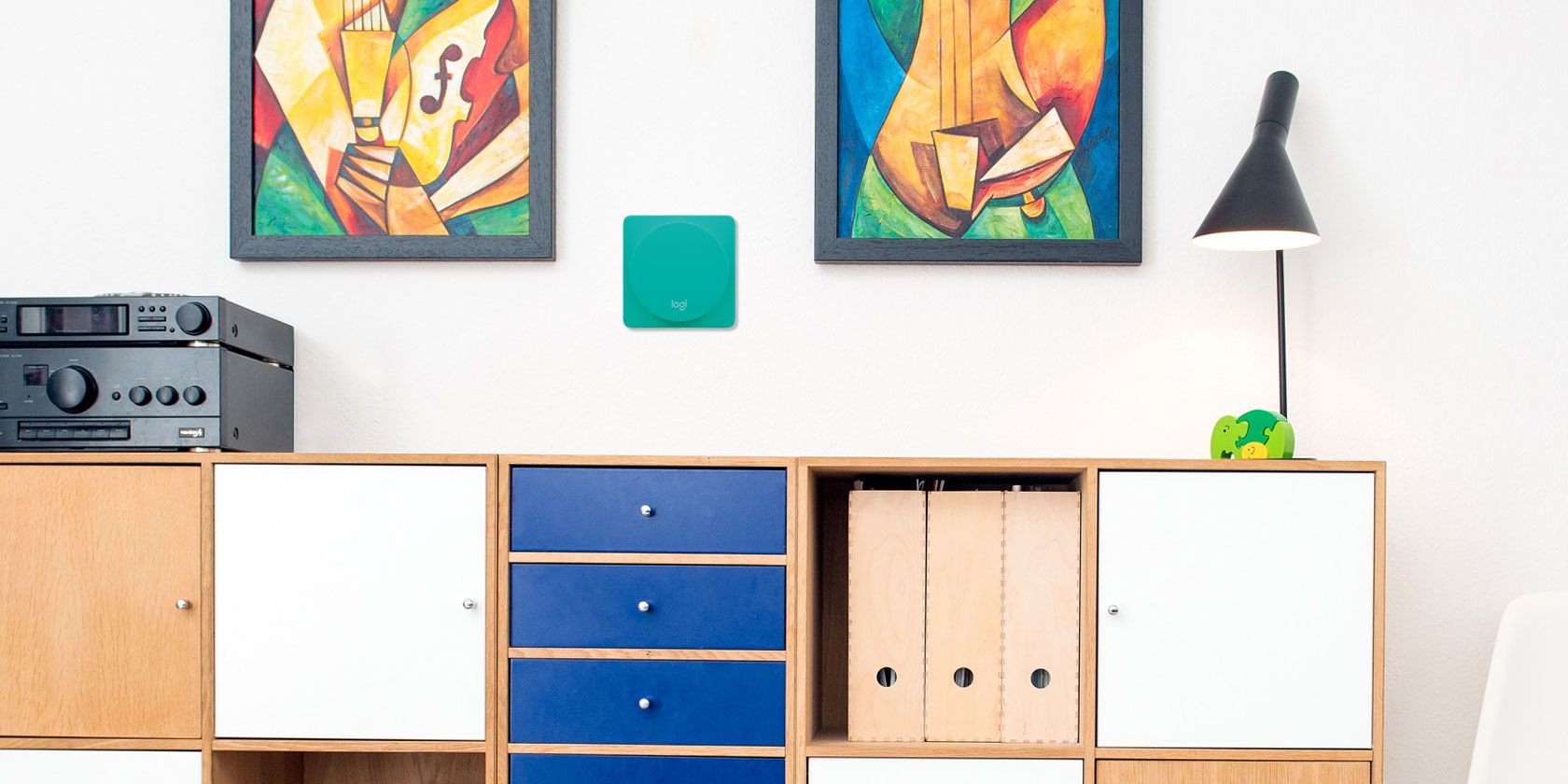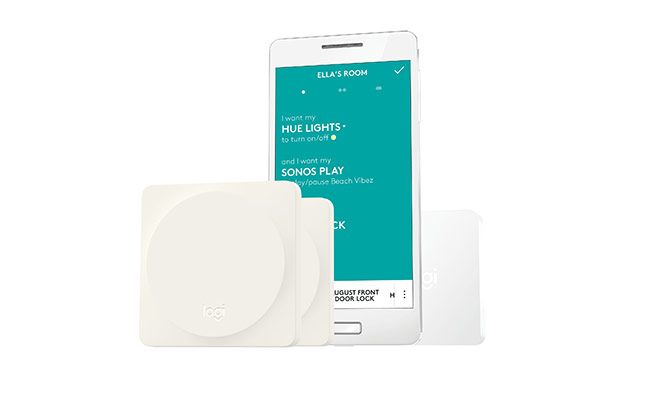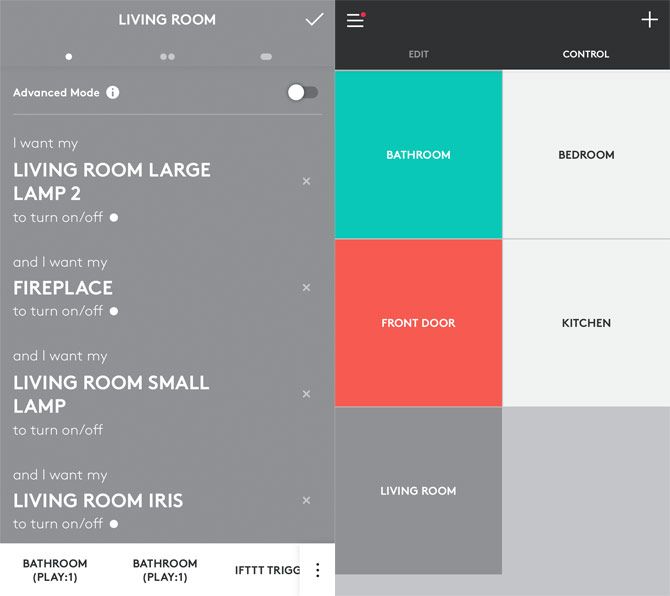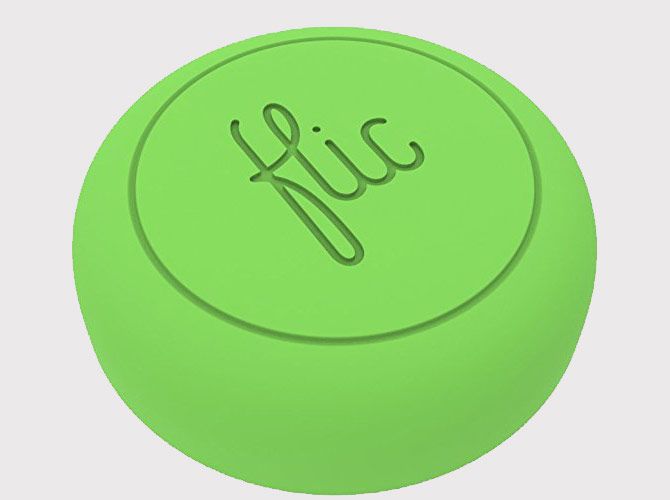Despite the many wonders of smart home technology, there are times when you just want to be able to switch your devices on and off without needing to grab your phone or speak a command to Siri or Alexa.
Thankfully, smart buttons allow you to control many of those products with a single tap.
What Are Smart Buttons?
Using Wi-Fi or Bluetooth technology, a smart button can wirelessly connect with other devices. A fairly new category in the growing Internet of Things market, you're probably already familiar with a simple, single-use option: the Amazon Dash button.
Originally arriving in 2015, Wi-Fi-connected Dash buttons are available from the online retail giant. Each battery-powered button represents a specific brand of product, such as Tide laundry detergent. Tied to your Amazon account, a simple press of the button will automatically place an Amazon order for said product.
There are now more than 100 different branded buttons available for purchase covering everything from underwear to pingpong balls. Each button is $4.99, but you'll receive a credit for the same amount after the first order. You also need to be an Amazon Prime member.
This might be the most common use for smart buttons, but it's certainly not the only one. With the right setup, smart buttons can act as an important home control device.
How Can You Use Smart Buttons?
- It seems like everyone needs to have their smartphone at all times, but I often leave my iPhone in my car or out of reach. While some people may have an Apple Watch to fill in for their phone, most probably don't. Smart buttons let you control your home without needing to carry your phone throughout your house.
- Smart buttons are far more affordable than other methods of smart home control like Google Home. As well, there's no need for specific voice controls or concerns about misunderstandings. All you have to do is press the button.
- Smart buttons are fantastic to use with children who are too young to have their own iPhones or smart watches, but who still want to control devices around the home. Smart button technology is also great for visitor access to home equipment, or for individuals who don't want to (or can't) learn how to control devices using more complex access methods.
Convinced? Let's take a look at two different smart button options that can control a smart home.
Logitech Pop
Hitting the market back in 2016, Logitech's Pop button was specifically designed for smart home devices.
A starter kit, which contains two white switches and the necessary bridge is $59.99. You can also purchase add-on buttons for $39.99 each, available in a number of colors to fit your home decor.
It only takes a few minutes to set up your new Pop technology. First, you'll need to plug the slim bridge into an available electrical outlet in the home. The bridge communicates with each switch, which are powered by a user-replaceable battery that lasts up to five years.
Logitech includes mounting tape with each button, so you can place a Pop pretty much anywhere. You can also operate the button on any flat surface.
Quick Control
After downloading the companion app for either iOS or Android, the real fun begins. The hub will automatically scan for any compatible devices, including: smart lights, blinds, locks, the Sonos connected speaker, other smart home hubs, and remote controls. The second-generation Pop, hitting the market soon, will also be able to control all Apple HomeKit devices.
Once scanning is complete, you can select each Pop and choose what the button will control with each gesture. There are three gestures to select: a single tap, a double tap, and a long press.
By default, each button acts like a switch. That means one gesture turns a light on and the same gesture will turn it off.
Advanced Control
The advanced mode of control turns each Pop into a trigger. So, one gesture will turn a light on, while a second gesture will turn it off. This functionality can open some additional features depending on the smart home devices you choose.
With some planning, you can also group a number of different devices together, and then control the set with a single gesture.
This feature comes in handy if you currently control a number of devices through separate smart home apps. For example, if I want to turn off my Insteon lights and lock my August Door lock each night, I need to hassle with two different smartphone apps. But, using the Pop I can coordinate both actions with a single tap.
Even after setting up each Pop, the app can definitely still come in handy.
The app is the only way to edit different actions, and you can also use the app as a controller from any location. So if you want to turn the lights off and lock the door, you don't need to be standing by the button. No other equipment or software is necessary.
Shortcut Labs Flic
If you're looking for a smart button that can be used for control at home and while on the go, the Flic from Shortcut Labs (UK) is a another product to consider.
The $34.99 device is available in a number of different colors, and its replaceable battery can last for up to 18 months.
While the Pop's bridge allows it to work independently, think of the Flic as a remote control for an iPhone or Android device. The button connects to your mobile device via Bluetooth, which has some advantages and disadvantages.
The Flic's biggest drawback is that you must always be in range of a smartphone. But the button itself is smaller than a coin making it incredibly transportable. Because it isn't connected to any stationary hubs, you can take it anywhere with you.
This can be especially helpful if you want it to control your smartphone for features like ordering an Uber without taking your phone out of your pocket!
At home, the smart button can control a number of smart devices including Philips Hue lights, Sonos speakers, and much more.
Just press the button with one of three gestures: tap, double-tap, or a long hold. You can match each of the three gestures to a shortcut using the Flic app (iOS and Android). For example, you could use a single tap to turn off the smart devices in your home before leaving for the day.
Flic is also compatible with the powerful IFTTT service which opens up a number of automation possibilities.
Final Thoughts
Everyone doesn't need a smart button. But, everyone could definitely find a use for one somewhere in their home. In a world where smart home technology continues to become more complicated, simple smart button technology provides alternative ways for smart home devices of all ages and abilities to control their devices.
Do you use any smart buttons in a smart home setup? What is your favorite use for them? Let us know in the comments.




